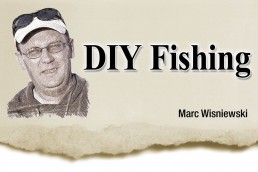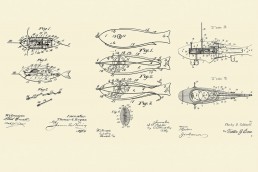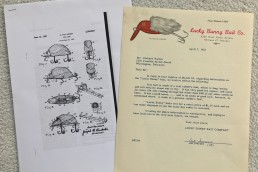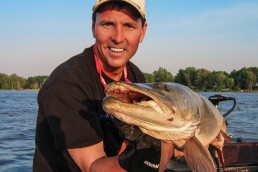Do-it-yourself Tubes Versatile lures in any Style
SHARE THIS POST
I’m old enough to remember when there were no such things as a tube for fishing. I think I was in middle school around 1975 when Bobby Garland busted out the first soft plastic tube lure. Anglers have spent the next 40 years finding dozens of ways to use them to catch fish. Although Mr. Garland intended them for hard- fished clear-water bass, the world has taken this bait and used it to catch nearly everything that swims.
I don’t know many anglers in this day and age who don’t have at least a few bags of tubes in their tackle bag. No matter how you fish for bass, there’s a rig that fits your needs.
But for now, let’s talk about how to make them with one of Do-it molds’ soft plastic tube molds.
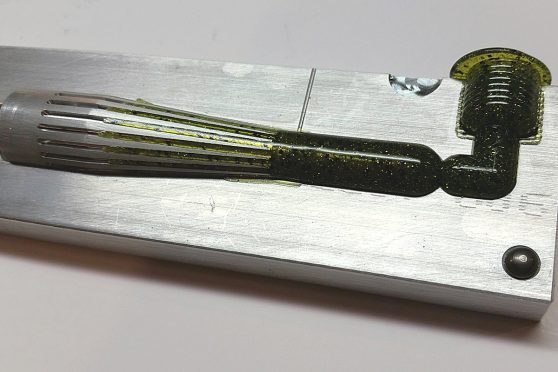
There are many soft plastic lures that some home tinkerers try to create on their own using plaster or RTV rubber—the tube is not one of those. As simple of a lure as the tube looks, it takes a very detailed piece of equipment to get a tube to come out correctly, and with little flash and individually separated tube tentacles. Do-it’s Tube molds deliver that accuracy and detail.
The first tube molds offered to the public ended up coming out as a straight sleeve where the angler had to hand-cut the skirt part of the tube with a razor blade or a slitter contraption. That whole process was tedious and almost made it not worth making your own tubes. But with the Do-it Tube molds, each leg of the skirt is individually formed, eliminating the need for any cutting or slitting. Every tube you inject is perfect, and as soon as the plastic sets, it’s ready to fish.
The Do-it soft baits are offered in seven different styles of tube lures: G-Tube, Super Smoothy Tube and “Tube.” These are the traditional types of tube lures. The G-Tube is a slightly ribbed tube at 4 inches long while the one just called “Tube” is a slightly thicker, longer version of a “normal” tube. If you’re after big bass and want a bigger profile, this is the one you are after.
My personal favorite is the Super Smoothy Tube molds available in 3, 3 1/2 and 4 inches. As the name implies, this tube is a little slimmer and sleeker compared to the other tubes. For me, this means it’s a little more versatile with its appeal to bass, walleyes and even the trout and salmon of the Great Lakes.
Are you enjoying this post?
You can be among the first to get the latest info on where to go, what to use and how to use it!
Expanding beyond the traditional tube design are some really cool creepy-crawly-looking tubes made just for the hardcore bass anglers. The first one is the Craw Tube, which features claw arms protruding from its sides. With the tube tentacles out the back and the claw arms out the sides, this one is a dead ringer for a crawfish looking for a fight. The Flippin’ Gorilla is 4 1/2 inches of big bass terror. This tube also features the basic tube design but with the addition of a small set of curly-tailed arms in the front and larger legs toward the rear. This one could be a craw or a lizard, but all we know is it’s something a big bass wants to destroy. Flip this into heavy cover or work it over a bed and you know it’ll get some attention.
Similar to the Flippin’ Gorilla is the Do-It Gorilla Tube. Instead of the rear curly-tailed legs, this one features the hawg-style flapping arms that look a little more like a big crawfish. This one comes in both 3 1/2 and 4 1/2 inches for lengths. Both the Flippin’ Gorilla and Gorilla Tube are great when a slow fall is desired, like when flipping around cover or pitching under docks.
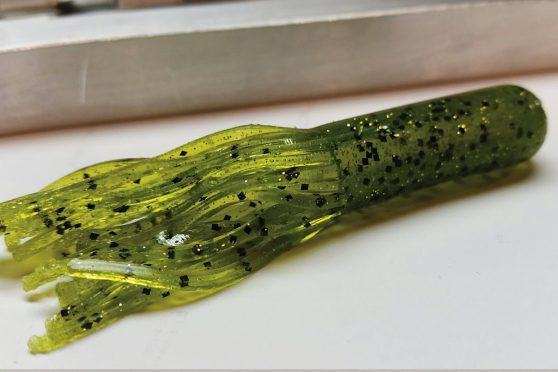
Last but not least is the Zipper Tube, a heavily ribbed body tube. At 4 1/2 inches, this is a big-bass magnet. Featuring the traditional tube tail, the body of the Zipper Tube causes nothing but commotion. The ribs cause vibrations in the water, they trap air and release it, and protect the point of the hook from obstructions when fished on a weighted hook or when it’s Texas rigged.
Like a lot of soft plastics for bass, some of the basic colors should be the standbys in your arsenal. A smoke color with red flake, a watermelon with black flake, and a pumpkin with green and purple flake will catch bass just about anywhere. But what got me to start making my own tubes is being able to make colors that you can’t buy in the store. Primarily, I was interested in colors that resembled baitfish: silver, gold, pearl white, pearl yellow and transparent yellow. Or, sometimes, I use just clear transparent where the color of the tube jig head is the only thing giving the tube color. This can be deadly in super-clear water conditions. As good as a tube is at resembling a crawfish or other floor-crawling creature, it’s also a great baitfish imitation. Using a dual injector, you can even shoot two colored tubes that may have a dark-colored back and a light- colored belly. This process is great for making baitfish and goby imitations.
Do-it also makes a great selection of jig head molds no matter what you want to do with your tubes. From swimming them to dragging the bottom, they have a mold for any application. Beyond the jig molds “intended” for tubes there are a couple that are not intended for them that make incredible heads for swimming a tube in open water for suspended fish or for those feeding on open-water baitfish. For me, this is an application for use on Lake Michigan trout and salmon, and I use two molds: the JBS-6-A Bullet Jig and the EGJ-6-A Egg Head Jig. Neither mold were intended to be slid in a tube, but after trying nearly every jig inside a tube, these two offer crazy darting action to the tubes.
Beyond jig heads, flip them Texas-rigged style, glide them on a weighted hook, Carolina-rig them, skip them under docks and even drop-shot them—it’s endless what you can do with a tube. You almost can’t fish them wrong, and when you catch that big bass, it’ll feel so good to say that you caught it on a lure you made yourself.
MWO
SHARE THIS POST
Did you enjoy this post?
You can be among the first to get the latest info on where to go, what to use and how to use it!
Marc Wisniewski
Marc Wisniewski is an avid Wisconsin angler specializing in Lake Michigan shore and inshore fishing. He also chases bass, pike, and muskies anywhere he can. He has built custom rods for 35 years and makes lures from wood, lead and soft plastics. Wisniewski has been writing fishing articles for more than 30 years.
